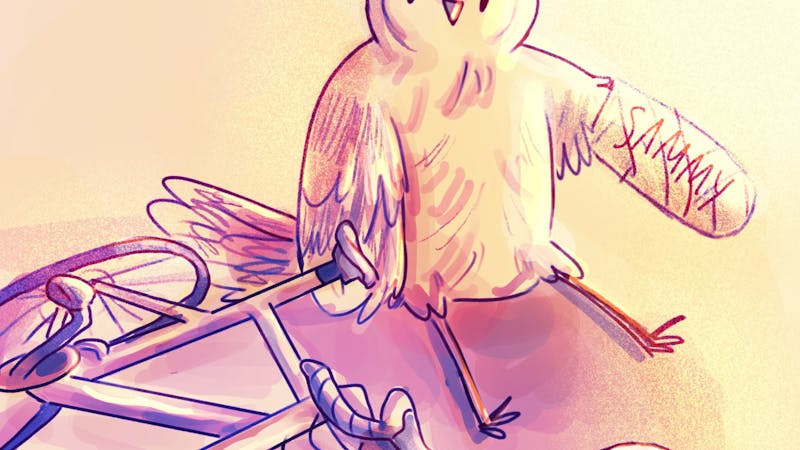Renee Wrysinski crafts circuits for change

As a child, Renee Wrysinski fit the standards for a future engineer to a tee, even getting an early start on model design by building Legos. Fifteen years later, she would win first place in Circuit Showdown, a televised engineering design competition for college students hosted by distributor Mouser Electronics and media company eeDesignIt. Wrysinski, who studies electrical and computer engineering, secured $10,000 and equipment donations for herself and the university.
Wrysinski’s win has significant implications for Rice according to Joe Young, professor of electrical and computer engineering. Young said that Wrysinski’s accomplishments will help to boost Rice’s reputation and attract a diverse student body.
“Rice is an incredible school, but we are smaller … so I think it’s all about getting the name out,” Young said.
Young, who had previously taught Wrysinski, said that Wrysinski’s participation in Circuit Showdown has increased recognition of Rice’s unique engineering program.
“During our chat, I was so focused on how [Renee] is just such a distillation of the engineering spirit,” Young said.
Wrysinski said she learned about Circuit Showdown through an advertisement in an electrical engineering mailing list.
“[I] was like, ‘Oh, I’ll throw my hat in the ring,’” Wrysinski said. “I didn’t actually expect to be chosen for it.”
Circuit Showdown producer Raymond Yin said the application process for contestants was competitive, with only three out of several dozen applicants chosen. Prospective candidates were asked to complete both a written application and an interview.
“My initial impression when interviewing all three of the contestants, as well as other ones during the Zoom interviews, was ‘Holy cow, these kids are smart,’” Yin said. “They were all incredibly bright.”
Circuit Showdown consisted of two rounds of competition; participants were challenged to design a themed project in under four hours for each round.
“The projects [the students] came up with were very interesting to me. They were given several categories which were completely broad and open-ended and in what they came up with, each one pulled some aspect of their personal life,” Kirk Ulery, Circuit Showdown judge, said.
During the first round, themed “smart home,” Wrysinski said she drew on her experience with poor air quality in her home in Colusa, California. She created a sensor to detect levels of carbon dioxide and other indoor pollutants, alerting users when ventilation is necessary.
“Going home for Christmas and other holidays, I would notice I get headaches way more often. And I figured out that it’s just because we don’t open windows at all,” Wrysinski said.
In the months leading up to Circuit Showdown, Wrysinski said she tried her best to familiarize herself with the equipment used during the contest, but the impromptu nature of the competition caused many technical difficulties. During the final round, Wrysinski said her biggest test came when the code she had written for a GPS refused to operate.
“I was Googling error codes and nothing was coming up. I talked to the technical mentors, and they also didn’t really know what was happening,” Wrysinski said. “I figured it out with like 10 minutes left in the competition.”
Wrysinski also said that filming, at least initially, was an additional source of pressure for her. Speaking and interviewing on camera during the competition forced Wrysinski to step out of her comfort zone.
“I have ‘engineer’ social skills,” Wrysinski said. “It’s not like I’m the most natural on camera or [it’s] something that I have a lot of experience doing. I was very nervous.”
However, as the competition progressed, Wrysinski said she grew more comfortable in her interactions — both on and off camera. Wrysinski said that she even began to develop a camaraderie with other contestants, as the students took lunch breaks and brainstormed project ideas together.
“I don’t think any of us were taking the competition aspect of [Circuit Showdown] all that seriously. Even though there was a lot at stake, we were all just trying to do the best we could and help each other,” Wrysinski said.
Ulery said organizers jumped at the chance to encourage the next generation of engineers.
“One of the things I try and do in my position is mentor young people. And to me, this seemed like a really good opportunity to get involved [in] the growth aspects that this brings for a college student,” Ulery said.
Wrysinski said her struggles with migraines and epilepsy motivate her to produce technology improving quality of life for those with similar medical conditions.
“I want to work on [products] that people interact with … small things that improve people’s everyday lives, even if they’re not something that people really think about,” Wrysinski said.
More from The Rice Thresher

New student center to ‘complete’ central quad
Breezeways, arches and outdoor seating will abound at the Moody Center Complex for Student Life set to break ground May 8. The 75,000-square-foot complex was designed by architecture firm Olson Kundig and has an expected completion date of fall 2027.

Best study snacks to fuel your finals
Finals are creeping up on us, and that means hunting season for the best study snacks on and off campus. Below are some that are sure to see you through the most enigmatic paper prompts and puzzling practice questions.

Head over handlebars: a brief history of Beer Bike accidents
In the first heat of the women’s race in this year’s Beer Bike, Melissa Geng said she was biking faster than she ever had, adrenaline pumping through her veins. All was going well, until she crashed into the fence of the alumni viewing area at the turn of her second lap.

Please note All comments are eligible for publication by The Rice Thresher.